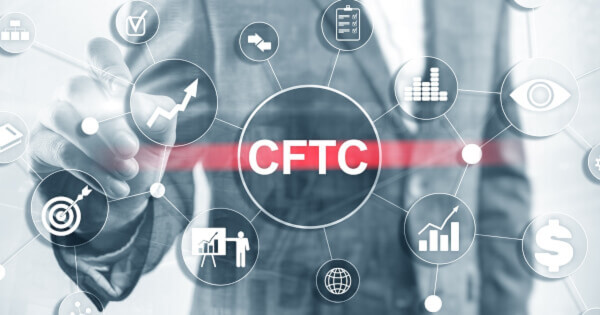Timothy Morano
Oct 01, 2025 07:35
The nation’s top financial regulators delivered a resounding rejection of consolidation rumors Monday, as Securities and Exchange Commission Chair Paul …
The nation’s top financial regulators delivered a resounding rejection of consolidation rumors Monday, as Securities and Exchange Commission Chair Paul Atkins and acting Commodity Futures Trading Commission Chair Caroline Pham sought to calm mounting speculation about a potential agency merger that has rattled cryptocurrency markets for weeks.
In a rare joint appearance at a Washington roundtable, both regulatory chiefs emphasized their commitment to collaborative oversight rather than organizational restructuring, effectively putting to rest whispers of an imminent agency fusion that had sparked uncertainty across digital asset markets.
Regulatory Leaders Unite Against Merger Talk
“Let me be clear: our focus is on harmonization, not on a merger of the SEC and CFTC, which would be up to Congress and the President,” Atkins declared during his opening remarks. The SEC chair characterized merger discussions as “fanciful talk” that risks distracting regulators from addressing critical coordination challenges that have plagued crypto oversight for years.
Pham echoed these sentiments, using her platform to directly address what she termed “FUD” – fear, uncertainty and doubt – surrounding the CFTC’s operational capacity and regulatory approach. “I think you will see that the CFTC is alive and well, and there needs to be no more FUD about what’s going on on the other side of town,” she stated emphatically.
The coordinated messaging represents a significant shift from years of jurisdictional disputes between the agencies, which have often left cryptocurrency companies navigating conflicting regulatory frameworks and uncertain compliance requirements.
CFTC Demonstrates Active Enforcement Stance
Dispelling concerns about regulatory inaction, Pham provided concrete evidence of the CFTC’s robust oversight activities since she assumed leadership on January 20, 2025. The acting chair reported 18 non-enforcement regulatory actions alongside 13 enforcement cases during her tenure, with an additional 14 enforcement actions initiated since September 4.
“The age of harmonized, innovation-friendly oversight is here,” industry observers noted, citing Atkins’ commitment to ending what he described as an era where agencies “operated in parallel lanes, too often in conflict with one another.”
Marcus Rodriguez, senior regulatory analyst at Digital Asset Research Institute, praised the collaborative approach. “This represents a watershed moment for crypto regulation. We’re finally seeing coordinated leadership instead of the jurisdictional turf wars that have created compliance nightmares for digital asset companies.”
Market Impact and Industry Response
The regulatory clarity initiative has already drawn positive responses from major cryptocurrency exchanges, with executives from Kraken and Crypto.com participating in the roundtable discussions. Industry participants have long complained about duplicative oversight requirements and conflicting guidance that have stifled innovation and increased compliance costs.
Sarah Chen, managing director of blockchain policy at Financial Innovation Council, emphasized the significance of the agencies’ unified stance. “When regulators spend more time fighting each other than providing clear guidance, it’s the American crypto ecosystem that suffers. This collaborative framework could be exactly what’s needed to maintain U.S. competitiveness in digital assets.”
The regulatory coordination effort comes as the cryptocurrency industry faces mounting pressure from international competitors, particularly as other jurisdictions advance comprehensive digital asset frameworks while U.S. companies navigate fragmented oversight structures.
Leadership Transition Challenges Persist
Despite the show of unity, the CFTC continues facing leadership uncertainty as Brian Quintenz’s nomination for permanent chair remains stalled in the Senate. Reports suggest the confirmation process hit unexpected obstacles when Gemini co-founders Cameron and Tyler Winklevoss raised concerns about potential enforcement priorities, leading to delayed committee votes.
The leadership vacuum has left Pham as the sole remaining commissioner at the CFTC following multiple departures and resignations throughout 2025, raising questions about the agency’s long-term operational capacity despite her reassurances about current effectiveness.
Path Forward for Crypto Oversight
Both regulatory leaders stressed their commitment to reducing duplicative requirements while maintaining robust investor protections. Atkins specifically highlighted the need for agencies to “coordinate seamlessly, reduce duplicative regulation, and give markets the clarity they deserve.”
The joint initiative represents a dramatic departure from previous years when jurisdictional disputes created regulatory gaps and compliance confusion across the digital asset sector. Industry advocates have consistently argued that unclear authority divisions between securities and commodities regulation have hindered blockchain innovation and driven cryptocurrency businesses to more favorable international jurisdictions.
As the roundtable discussions continue, market participants are watching closely for concrete policy proposals that could emerge from this newfound regulatory cooperation. The success of this collaborative approach could determine whether the United States maintains its position as a global leader in financial innovation or continues ceding ground to jurisdictions with more streamlined digital asset frameworks.
Image source: Shutterstock









